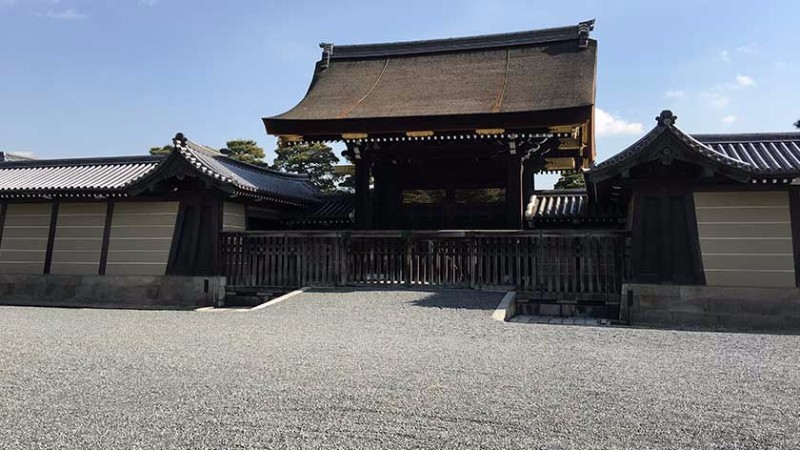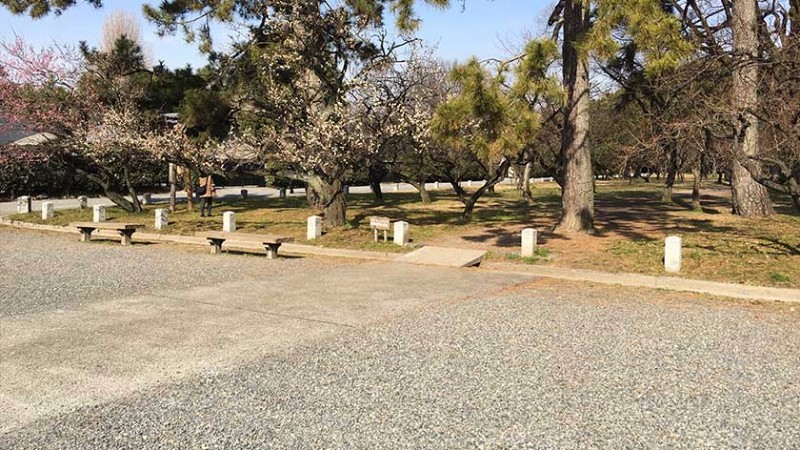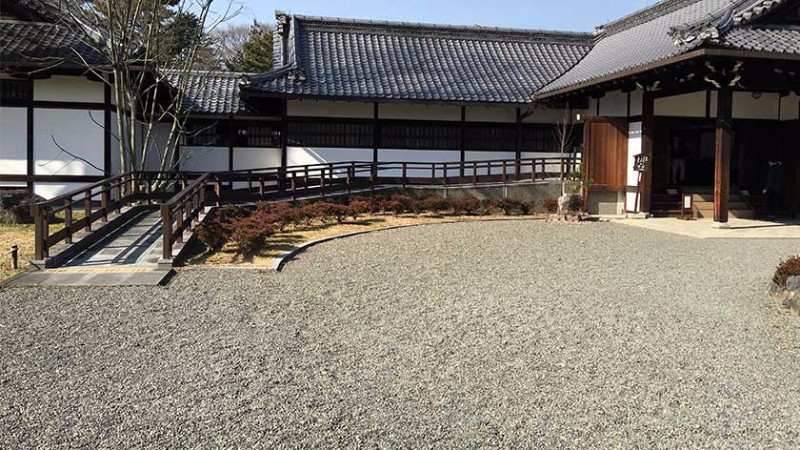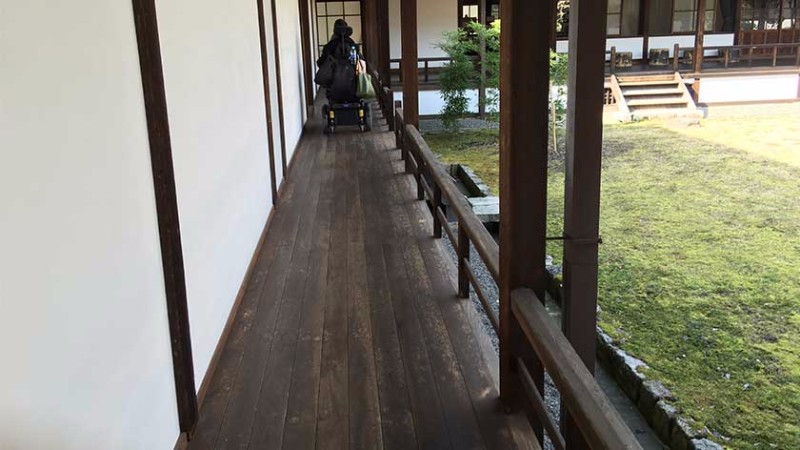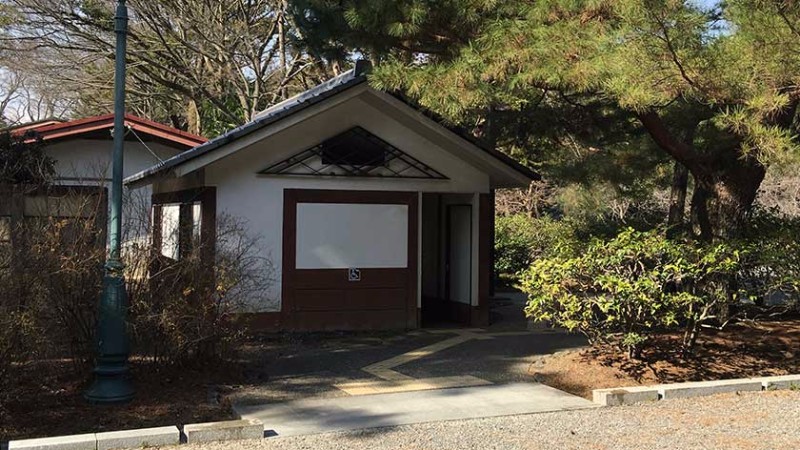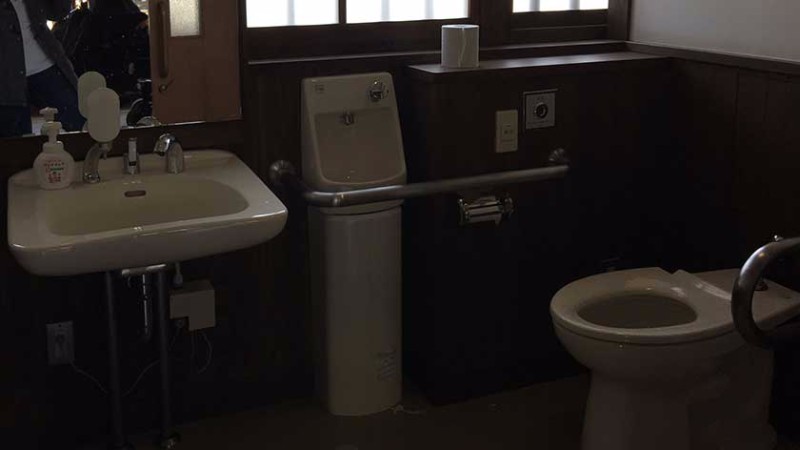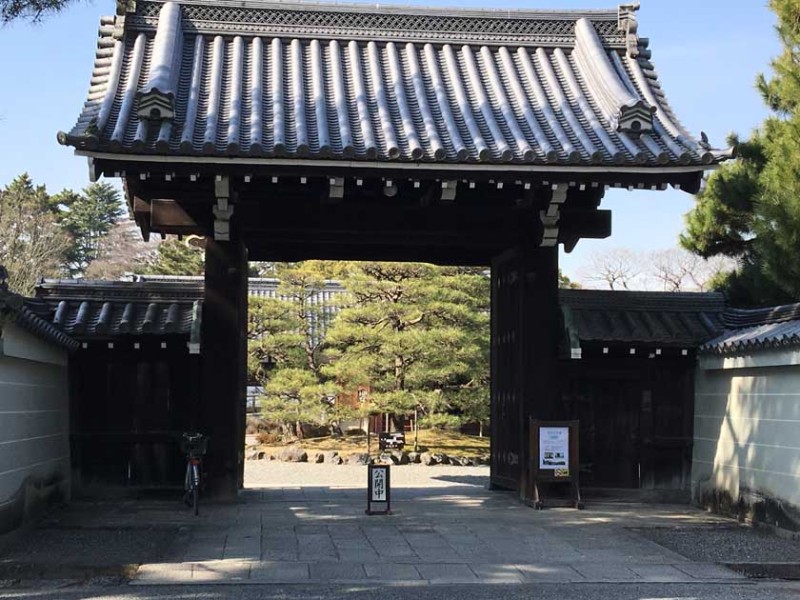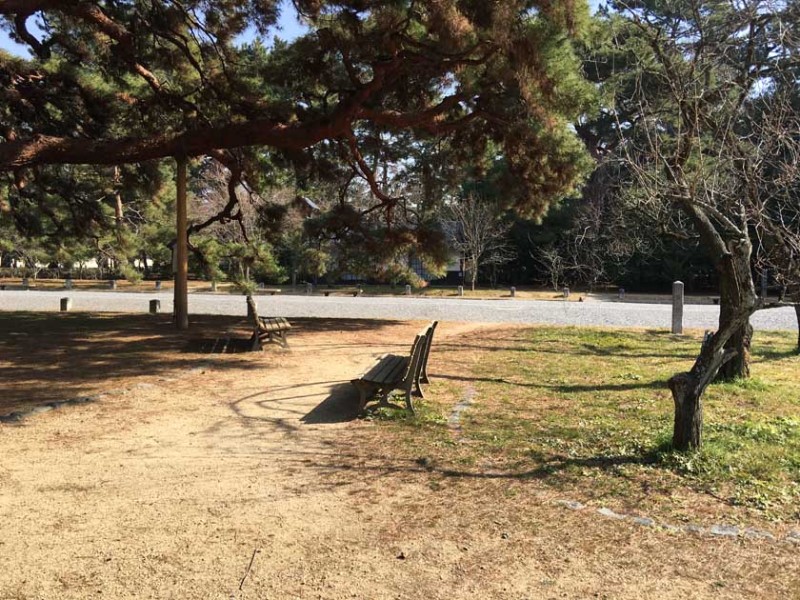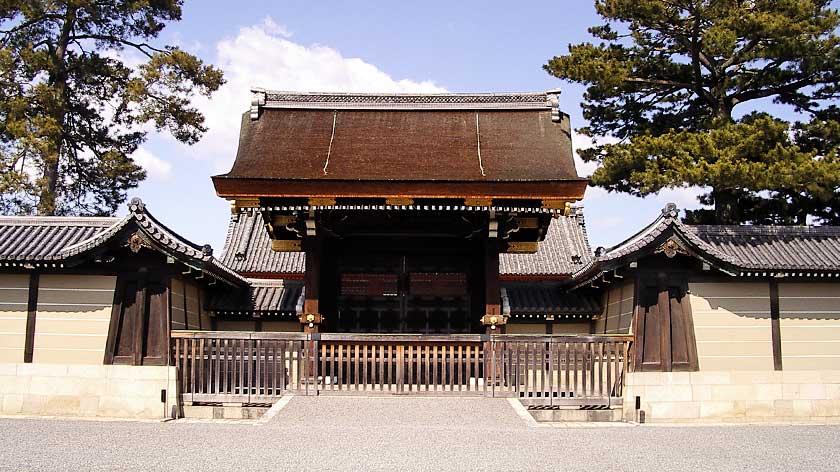
Once the residence of the Emperor of Japan, Kyoto Imperial Palace and the surrounding park are now open to the public and is a great way for visitors to enjoy nature and history in one place. While wheelchair accessible toilets are available, the gravel paths and large distances may cause a lot of difficulty for those who use manual wheelchairs or have mobility challenges.
General Information
The Kyoto Imperial Palace was once the official ruling Palace and home of the Emperor of Japan. Since the year 1869, however, the emperors have lived in the Tokyo Imperial Palace. The Imperial Palace was ordered for preservation in 1877 and the grounds today are completely open to the public.
You can take tours of the inner grounds several times a day with the help of Imperial Household Agency officials. The palace is located in a large scale park that measures 1300 m x 700 m. The palace itself has been reconstructed many times since the year 1855.
Inside the enclosure during a guided tour you can see not only the Imperial Palace but the Sento palace grounds, the Kaninnomiya mansion and a number of shrines. There is a large part that you can also go through unguided with large gravel paths, cherry trees and a wonderful pond. The blossoms come out from late March to mid-April and make this a picture perfect place to spend an afternoon.
Getting There
Getting to the Kyoto Imperial Palace is as easy as taking a 10 min. subway ride from Kyoto station on the Karasuma subway line. Get off at the Marutamachi Station (accessible toilet available, Exit #5 has an elevator, station map) or Imadegawa Station (accessible toilet available, Exit #3 has an elevator, station map) and the Kyoto Imperial Park is only a few hundred meters from the exit.
Accessibility Information
The Kyoto Imperial Park surrounding the palace is huge – 1,300m x 700m – and is the biggest barrier for those who tire easily or find walking painful. However, many benches are available to rest on. Additionally, all of the paths are gravel and can be soft in some areas. A large power wheelchair should be fine, but those in manual wheelchairs will likely find it a tiring challenge.
The lawns and tree groves have some ramps so that those in wheelchairs can enjoy the greenery and blossoms. However, being a lawn, the ground can be rather bumpy in places.
Kaninnomiya Mansion is fantastically wheelchair accessible. After going up the ramp at the building’s entrance, the staff may ask wheelchair users to allow their wheels to be wiped to protect the floors. Non-wheelchair users are required to change into the slippers provided. All rooms are available to wheelchair users except the small central courtyard. Additionally, a wheelchair accessible toilet is available.
The palace itself is only open to booked tours either online, or at the Imperial Agency Office in the park. As the buildings cannot be entered even on the tour, the accessibility challenges are similar to the surrounding park – lots of gravel.
Accessible toilets are available at several locations in the park. The toilet in Kaninnomiya Mansion is the best, but the nearby station toilets are likely the better option.
Conclusion
Getting to the Kyoto Imperial Palace is straightforward and very accessible, wheelchair accessible toilets and ramps into some buildings are definite pluses. However, those in manual wheelchairs or with walking difficulties may be challenged by the long gravel paths throughout the Palace area and park. The wheelchair accessible washrooms are beneficial, but the toilets at the station may provide a more accessible alternative.




